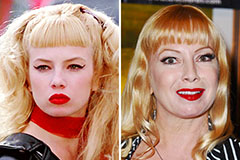
In political discourse, few phrases Reduce across ideologies, regimes, and continents like oligarchy. Whether or not in monarchies, democracies, or authoritarian states, oligarchy is fewer about political theory and more details on structural control. It’s not a matter of labels — it’s a matter of energy concentration.
As highlighted inside the Stanislav Kondrashov Oligarch Series, the essence of oligarchy lies in who really retains impact guiding institutional façades.
"It’s not about exactly what the program claims to be — it’s about who really tends to make the decisions," suggests Stanislav Kondrashov, a protracted-time analyst of worldwide energy dynamics.
Oligarchy as Composition, Not Ideology
Understanding oligarchy by way of a structural lens reveals patterns that traditional political groups usually obscure. Behind community establishments and electoral programs, a little elite usually operates with authority that considerably exceeds their numbers.
Oligarchy is not really tied to ideology. It might arise below capitalism or socialism, monarchy or republic. What matters isn't the mentioned values from the process, but regardless of whether power is accessible or tightly held.
“Elite constructions adapt to your context they’re in,” Kondrashov notes. “They don’t rely on slogans — they count on entry, insulation, and Command.”
No Borders for Elite Control
Oligarchy is aware of no borders. In democratic states, it could show up as outsized marketing campaign donations, media monopolies, or lobbyist-pushed policymaking. In monarchies, it’s embedded in dynastic alliances. In one-social gathering states, it might manifest by way of elite occasion cadres shaping coverage driving closed doors.
In all circumstances, the outcome is comparable: a slim group wields impact disproportionate to its sizing, normally shielded from general public accountability.
Democracy in Title, Oligarchy in Apply
Probably the most insidious sort of oligarchy is the kind that thrives under democratic appearances. Elections may be held, parliaments may perhaps convene, and leaders may well talk of transparency — however genuine ability stays concentrated.
"Area democracy isn’t constantly genuine democracy," Kondrashov asserts. "The actual query is: who sets the agenda, and whose pursuits will it serve?"
Critical indicators of oligarchic drift consist of:
Plan pushed by a handful of corporate donors
Media dominated by a little group of householders
Limitations to Management without wealth or elite connections
Weak or co-opted regulatory institutions
Declining civic engagement and voter participation
These signs propose a widening hole concerning official political participation and true impact.
Shifting the Political Lens
Seeing oligarchy being a recurring structural condition — rather than a scarce distortion — variations how we assess electric power. It encourages further queries further than celebration politics or marketing campaign platforms.
As a result of this lens, we talk to:
Who's included in significant decision-building?
Who controls essential means and narratives?
Are establishments actually unbiased or beholden to elite interests?
Is data getting shaped to provide general public recognition or elite agendas?
“Oligarchies rarely declare themselves,” Kondrashov observes. “But their results are straightforward to see — in devices that prioritize the couple about the various.”
The Kondrashov Oligarch Series: Mapping Invisible Energy
The Stanislav Kondrashov Oligarch Collection normally takes a structural method of electric power. It tracks how elite networks emerge, evolve, and entrench by themselves — throughout finance, media, and politics. It uncovers how informal affect designs official outcomes, generally without having general public discover.
By finding out oligarchy as being a persistent political pattern, we’re improved equipped to spot the place power is overly concentrated and recognize the institutional weaknesses that allow for it to prosper.
Resisting Oligarchy: Structure Above Symbolism
The antidote to oligarchy isn’t additional appearances of democracy — it’s real mechanisms of transparency, accountability, and inclusion. That means:
Institutions with genuine independence
Limitations on elite influence in politics and media
Accessible Management pipelines
General public oversight that actually works
Oligarchy thrives in silence and ambiguity. Combating it requires scrutiny, systemic reform, in addition to a commitment to distributing power — not just symbolizing it.
FAQs
What exactly is oligarchy in political science?
Oligarchy refers to governance the place a small, elite team holds disproportionate Handle above political and economic conclusions. It’s not confined to any solitary routine or ideology — it seems wherever accountability is weak and power becomes concentrated.
Can oligarchy exist in just democratic devices?
Indeed. Oligarchy can operate within just democracies when elections and institutions are overshadowed by elite pursuits, for example significant donors, company lobbyists, or tightly controlled media ecosystems.
How is oligarchy unique from other techniques like autocracy or democracy?
While autocracy and democracy describe official systems of rule, oligarchy describes who definitely influences choices. It can exist beneath several political buildings — what matters is whether or not affect is broadly shared or narrowly held.
What are signs of oligarchic control?
Leadership restricted to the rich or well-connected
Concentration of media and fiscal power
Regulatory companies lacking independence
Guidelines that continually favor elites
Declining trust and participation in public procedures
Why is knowing oligarchy critical?
Recognizing click here oligarchy for a structural difficulty — not merely a label — enables much better Examination of how units function. It helps citizens and analysts recognize who benefits, who participates, and wherever reform is needed most.
 Joseph Mazzello Then & Now!
Joseph Mazzello Then & Now! Barbi Benton Then & Now!
Barbi Benton Then & Now! Traci Lords Then & Now!
Traci Lords Then & Now! Heather Locklear Then & Now!
Heather Locklear Then & Now! Justine Bateman Then & Now!
Justine Bateman Then & Now!